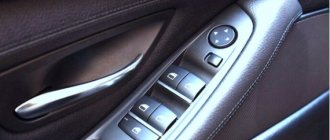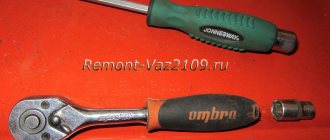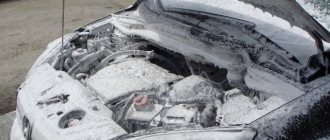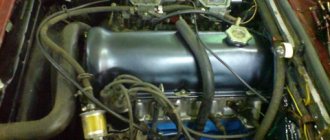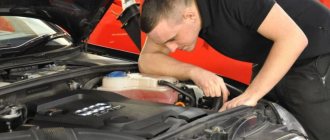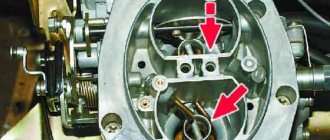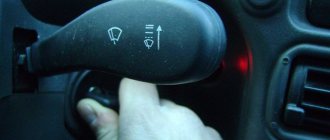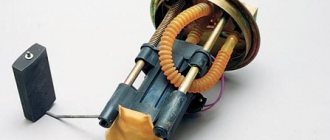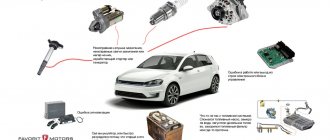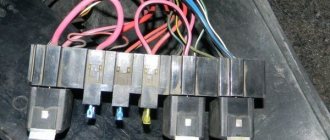There can be a huge number of reasons why a car “loses horses”. As a rule, as soon as the car stops “pulling” uphill, this is attributed to the ignition coil, clutch malfunctions, lack of compression, and rightly so. True, there may be many more reasons, which we propose to understand further. Below we have collected several common reasons why a vehicle suddenly begins to “act up” on hills and we will provide recommendations from experienced drivers and service station technicians on what to do if they occur.
Poor quality fuel
One of the reasons why the car does not pull uphill may be poor quality fuel. And indeed, the “slurry” that some gas stations offer to fill is scary not only to pour into the tank, but also to be near. Liquids of dubious origin are often diluted with unknown reagents. It is impossible to guess what kind of gasoline is poured into your favorite “baby”, unless, however, there is a mobile laboratory hidden somewhere in your pocket, so you have to rely only on luck. The only indicator that should alert you is the suspiciously low cost of the proposed fuel. So, if you see that gasoline at some gas station is cheaper than elsewhere, do not rush to fill the tank full (and not full either), if you do not want to “run into” a major overhaul of the engine and, at a minimum, the fuel filter or fuel pump.
For normal operation of the engine, you need the correct fuel mixture, provided for by the technical characteristics of the machine. This is necessary for high-quality ignition. If it is not ignited enough, the car works at half capacity, which can result in “floating” revolutions or the engine shaking. Sometimes the power unit may stop starting altogether. So pay close attention to what you fuel, otherwise problems will follow.
Let's sum it up
Given the rather complex design system of a modern car, the loss of traction may not be felt as much or even not felt at all in daily use. But this is a serious indicator that it is time to carry out a certain set of repair work. Therefore, it is better to listen to the car and try to determine its real problems. If a loss of power is noticed, it is best to immediately go to a service station and fix the problem. This is the only way you can avoid serious damage with quite costly consequences.
If your car has lost power for a long time, you shouldn’t think that this is a natural process of car aging. It is better to set a goal and eliminate all possible causes of this problem. However, loss of power can indeed be a natural process. Major repairs, replacement of original parts with analog ones and other familiar processes for the car owner are a real problem for the operation of the unit. Tell me, have you encountered a sudden loss of power in your car, and how was it decided to deal with this problem?
Dirty air filter
Another reason why a car does not drive well uphill is a clogged air filter. If it is dirty, it is not able to allow air to ignite the fuel. This leads to a significant drop in engine power and an increase in the total consumption of gasoline, diesel or gas.
An additional reason is not so much the contamination of the element as the materials used in it, namely their quality. Almost every experienced driver knows a couple of stories involving cheap and low-quality filters that tend to tear and simultaneously break piston rings.
Checking the quality of the air filter is very simple. To do this, you need to assess its condition under the hood. If a large amount of dirt is visible on it, then it’s time to change the element.
Dirty or old spark plugs
Dirty or old spark plugs are a common cause of a car losing power when driving uphill. Their regular replacement should be done every 20-30 thousand kilometers. If the driver previously did not skimp and installed platinum spark plugs, their resource is increased to 100 thousand km. But even such “monsters” will one day fail.
Several indicators will help you understand that the candles are not functioning:
- It is difficult to start the engine, especially in the cold season.
- Unstable operation of the power unit at idle, sharp jumps in the tachometer needle, the engine will periodically begin to stall.
- The engine operates with increased vibration, which can be felt when shifting the gearbox.
- The car does not go uphill well.
- There may be dips in the gas pedal.
- Increased fuel mixture consumption.
Why does an injection engine lose power?
Loss of power in an injection engine is often caused by improper operation of the electronics. There may be clogging of the injectors, breakdown or incorrect operation of various sensors.
- Air flow meter or mass flow sensor. The control unit instantly reacts to its failure, changing the OZ by several degrees in the direction of delay. The result is that the power first increases, but then begins to fall lower and lower. At the same time, fuel consumption increases and the exhaust becomes much dirtier.
- TPS or throttle position controller. When it deteriorates, the power of the unit instantly drops, unpleasant jerks and dips appear, and the idle speed is unstable.
- The pressure regulator makes itself felt by difficult starting, unstable speed at neutral speed and loss of traction.
- The antifreeze temperature sensor, if not working correctly, causes problems with engine response, especially in the hot season. The ECU receives an incorrect signal, detonation and power loss begin.
Thus, the loss of internal combustion engine power is primarily due to the following reasons:
- low-grade fuel, which can be seen immediately after refueling;
- clogged air filter;
- dirty candles;
- clogged fuel filter;
- errors in the operation of the injector;
- malfunction of the catalyst or the entire exhaust system.
Dirty fuel filter
Another reason why a car may not drive well uphill is a dirty fuel filter. It, like air, tends to wear out or become dirty. Accordingly, if it does not allow the fuel to burn completely due to a lack of incoming oxygen, it will interfere with the normal supply of the fuel mixture. The only way to eliminate this problem is to replace the element.
It is recommended to change it every 30-40 thousand km for the remote type and every 100 thousand km for the built-in type. This difference in numbers is due to the installation method. So, in the latter case, dismantling the filter involves disassembling the fuel pump, which in some cases is also accompanied by removing the fuel tank.
Important: to replace the remote filter you will have to be extremely careful. It is located under the bottom of the car or under the hood. An error made at any stage will cause various types of contaminants to stick to the supply hoses and clog the fuel injector nozzles. So for this type of work it is necessary to contact specialists.
Why the car doesn't pull: reasons (carburetor)
If such an engine loses traction, the fuel pump fitting may be dirty or there may be low pressure in the system.
It is also possible that the carburetor is simply dirty or there is some problem with the needle valve. There may be errors or incorrect settings for adjusting the composition of the fuel mixture. If the carburetor flaps are not open enough, traction may be lost. When the fuel level in the engine decreases, traction also disappears. When there are any problems with traction in the engine, it is urgent to carry out a full diagnosis.
You definitely need to find out why the car pulls poorly; we have already looked at the reasons. If a malfunction is found, it should be corrected immediately. If you could not find the reason for the decrease in cravings on your own, there is no need to hesitate. A more in-depth examination should be carried out at the service station. But basically, the cause can still be identified and eliminated independently.
So, we found out why the car loses traction.
Mechanical problems with the engine
Often a car loses power uphill due to a malfunction of the motor itself and its banal wear. Every 100 thousand km, the engine power drops by about 10-15% and this is normal, but if the losses seem excessive, it’s time to open the hood and see what’s happening there. To do this, check the compression.
Compression is the pressure in each cylinder generated as the piston reaches top dead center. In each cylinder it should correspond to values from 8:1 to 12:1 for gasoline units and from 14:1 to 23:1 for diesel units. Each manufacturer can set its own nominal value, so it is better to check this figure in the technical data sheet. Compression is measured with a compression gauge, which looks like a pressure gauge attached to a tube or connected to a rubber hose equipped with a tip.
This is done as follows:
- The compression gauge is inserted into the block where the spark plugs are located instead of one of them.
- Next, you will need to disconnect the wire from the ignition coil (this is necessary so that it does not burn out!).
- Then you will need to use the ignition key to start the engine and note the highest reading on the device.
Fuel system malfunction
This reason is associated with improper operation of the fuel pump. As a rule, it results from the use of low-quality fuel with foreign impurities. As a result, the element becomes clogged, which also results in a decrease in traction. Most often, such a nuisance takes by surprise those who like to drive with a small amount of fuel in the tank. In this case, the degree of wear of the fuel pump increases, not to mention the loss of tightness of the fuel line, which also quickly fails.
The way to mitigate the problem is to replace the fuel pump and not skimp on the amount of fuel poured. Also, under no circumstances should you allow it to end at all and the car to stall.
Fuel quality
A mismatch in octane rating for a car's engine can result in slow acceleration. Outright counterfeit products, instead of high-quality gasoline, immediately make themselves known. The car may not start immediately, or may not start at all.
- If the car does start, in addition to reduced power, signs of detonation may appear, that is, when the fuel ignites before the required time.
- This will be expressed in a characteristic tapping sound when you press the gas pedal.
- In this case, you can either add higher quality fuel or completely replace the fuel in the tank.
If the problem remains even after draining the counterfeit, you need to take the car to a car dealership to completely flush the car's power system.
Driving with handbrake
Finally, one of the most common reasons for lack of traction is driving with a handbrake. Sometimes drivers forget to check whether the handbrake is on, especially when it comes to modern cars, when it consists of only one button with a light. True, in the latter case, the corresponding light on the “tidy” lights up, but not every novice car enthusiast can determine its meaning.
When the handbrake is engaged, not only does the car hardly climb uphill, but also premature wear of the pads (they will wear off on the brake drums or discs) and wheel bearings occurs. This can also lead to other troubles. The latter depends on the speed and duration of such movement and can completely disable the entire braking system. So the driver should remember - driving with a handbrake is more expensive for yourself!
Now you know what to do if the car does not pull uphill. Use the recommendations presented and diagnose all vehicle systems in a timely manner. And if you find at least one of these problems, immediately contact the experts at a car service station for help.
Air flow and pressure sensor
These two elements determine how much air the engine consumes, as well as how much air is needed to create the optimal air-fuel mixture. If these sensors fail, then the ECU will not make the calculations correctly and, accordingly, traction may be lost. If the car does not pull, the reasons (including the VAZ-2110 injector) may be in these sensors. If necessary, they should be replaced, and then the power will return again.
But if the car has an ECU, why doesn’t the corresponding light on the dashboard light up? The electronic control unit is programmed for an open or short circuit. If there is none of this, and the sensor simply does not work as it should, the computer will be able to report that the mixture is being prepared incorrectly. If the car pulls poorly, there may be other reasons, but it’s worth checking the sensor. You will have to look for the source of the sensor’s malfunction yourself. The parameters of a specific element can be found in the instructions.
